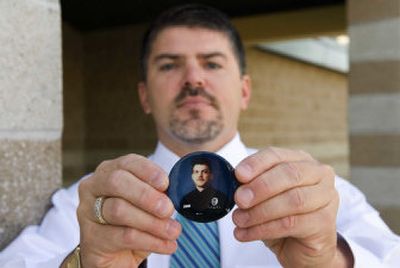Supreme Court: Buttons didn’t bias jury

WASHINGTON – Murder trial spectators were free to wear buttons with a picture of the victim in front of the jury that convicted his killer, the Supreme Court concluded unanimously Monday.
The ruling reinstated a murder conviction in California that had been reversed by a federal appeals court.
But the justices left open the question of whether spectators’ conduct could cross the line and deprive a defendant of a fair trial.
The court ruled in favor of California prosecutors who said the buttons were a harmless expression of grief by family members at the trial of Mathew Musladin. It was the first time the justices ruled on a case involving the conduct of courtroom spectators.
In previous cases, the court has weighed in to prevent prosecutors from clothing defendants in prison garb or shackling prisoners in a courtroom, other than for the most pressing security reasons.
In the California murder case, Musladin had successfully challenged his conviction in the 1994 shooting death of Tom Studer, the fiance of Musladin’s estranged wife. Musladin is serving a sentence of 32 years to life in prison.
Prior to the trial, Musladin’s lawyers tried to preclude the family members from wearing the buttons in the courtroom. The trial judge, however, rejected their request.
Justice Clarence Thomas, writing for five of his colleagues, said the state court decision allowing the trial to proceed with Studer’s relatives wearing a button with the victim’s photo “was not contrary to or an unreasonable application of clearly established federal law.”
The other three justices concurred with the court’s judgment, but did not join Thomas’ opinion.
The appeals court had ordered a new trial for Musladin, saying the buttons “essentially argue that Studer was the innocent party and that the defendant was necessarily guilty.”
The case turned on a 1996 law, the Anti-terrorism and Effective Death Penalty Act, limiting the circumstances under which federal judges may grant habeas corpus petitions in state court cases.
In order for a federal judge to step in, says the law, the state court decision must be “contrary to” or an “unreasonable application” of clearly established federal law as determined by the Supreme Court.
The appeals court said the state court decision was contrary to Supreme Court holdings. But Thomas wrote, “We hold that it was not.”